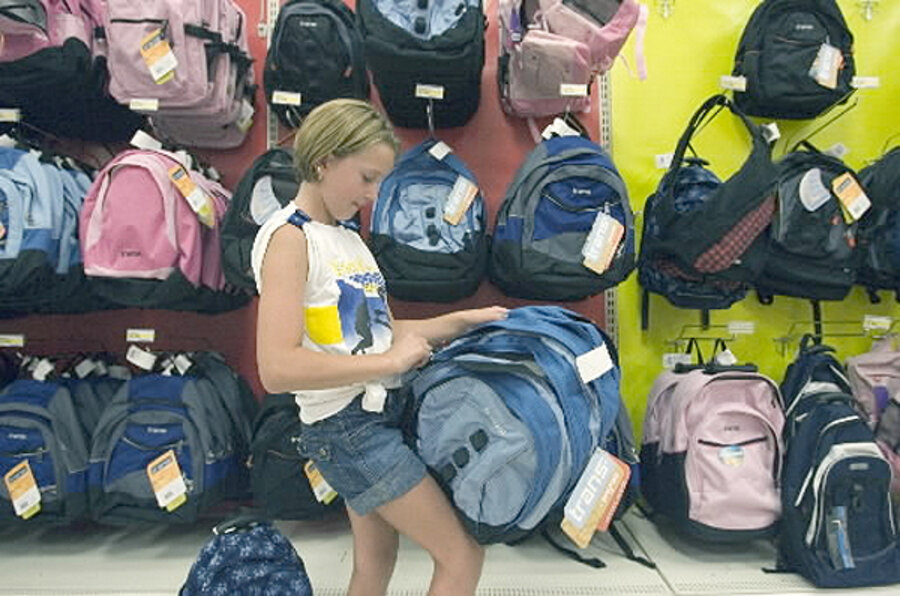Boys get trucks and girls get flowers? One mom says enough with the separation
Loading...
Preschoolers can be quick to notice gendered illustrations on products. If a package has a picture of a boy on it, that item must be for boys; if it has a picture of a girl on it, it must be for girls. Likewise, if a package has pink, flowers, and/or hearts, it must be a girl’s product; if it has cars, trucks, or construction vehicles, it must be for boys.
I saw this in action this weekend, when we took our four-and-a-half year old son, T., shopping for a new bicycle helmet.
His favorite colors are blue, red, green, and purple, so to avoid buying a helmet covered in licensed characters (we do not need one more Lightning McQueen anything!), I offered him a few choices: A black helmet with blue and green stripes; a solid red helmet; and a solid dark purple helmet.
For a moment, I thought he was going to choose the purple helmet. But then, he announced: “No, mama, that one’s for girls.”
It looked pretty gender-neutral to me, so I was puzzled. “What makes you think it’s for girls?” I asked.
“From the picture, mama. See? That’s a girl.”
I took a closer look, and sure enough, the helmet – though labeled a “youth” helmet – showcased a photo of a smiling girl with a long ponytail and a pink shirt.
Other helmets either had photos of boys or girls on them or did not feature a photo at all. I realized that any helmet that was remotely girlish – with even the smallest touch of pink or purple – had a girl on the packaging; those that seemed boyish or gender-neutral (e.g., black and white) only depicted boys.
After much deliberation, my son chose the blue and green helmet. It did not have a photo of a child on it, but its colors clearly coded it as appropriate for boys – and it had flashing lights on the back! No way could any other helmet compete with that.
Before he made his choice, I explained something to him. “Just so you know, the purple helmet is for boys AND girls,” I said. “Purple is not just for boys or just for girls. Colors are for everyone!”
“Hm. Okay, mama.”
Phew. So far, he seems pretty open to this concept. I saw this in action a few months ago, when my son was shopping for Hot Wheels cars to go with his T-Rex Takedown set.
He decided that he wanted a blue car, a green car... and a pink car. I was thrilled! But then I was disappointed: there was not a single pink Hot Wheels car in the store.
“I’m sorry we can’t find a pink car,” I said. “I’ll try to find you one at another store.”
“Okay,” T. replied, “because I really want one. It really really needs a pink car!”
I went home and posted about it on facebook, and within minutes, friends and family were helping me with my search. My mom came through; she found a pink car in her local store. My son was thrilled.
Only later did I think to ask: Why did he need a pink car, anyway?
His answer: “Because it shows it on the box!”
Oh!
I took a closer look, and sure enough, he’d noticed something that I had entirely missed: in the upper right-hand corner, a pink Hot Wheels car was careening down the tracks.
I hadn’t picked up on this small detail at all, but for my son, it was significant enough to make him request a color other than one of his favorites. Amazing!
I’m sure that detail isn’t lost on other children, either. In fact, the inclusion of a pink car on the package might help make girls feel that this toy – though stereotypically boyish – is for them, too. And I think that’s really great.
What if the purple helmet had a photo of both a boy and a girl on the packaging? Maybe my son would have selected it. Maybe the manufacturer would be able to sell that model to twice as many kids!
But unfortunately, that’s not how marketing usually works nowadays. It’s all about segmentation, about separating the boys from the girls, in hopes of selling twice as many products. The logic seems to be that if a product is just for girls, it won’t be handed down to their baby brothers, and vice-versa, so segregation and segmentation is seen as good for business.
That’s a shame, since it’s important for boys and girls to learn to play together. In too many cases, marketers are shortchanging our kids. The T-Rex Takedown packaging is the exception, not the norm.
In sum, packaging is important. The way manufacturers label things matters. It plays a role in the socialization of our kids. It’s worth paying attention to it so that you can talk about it with your children when you need to. I’m guessing that your kids, like mine, have already noticed.
Rebecca Hains blogs at rebeccahains.wordpress.com.








